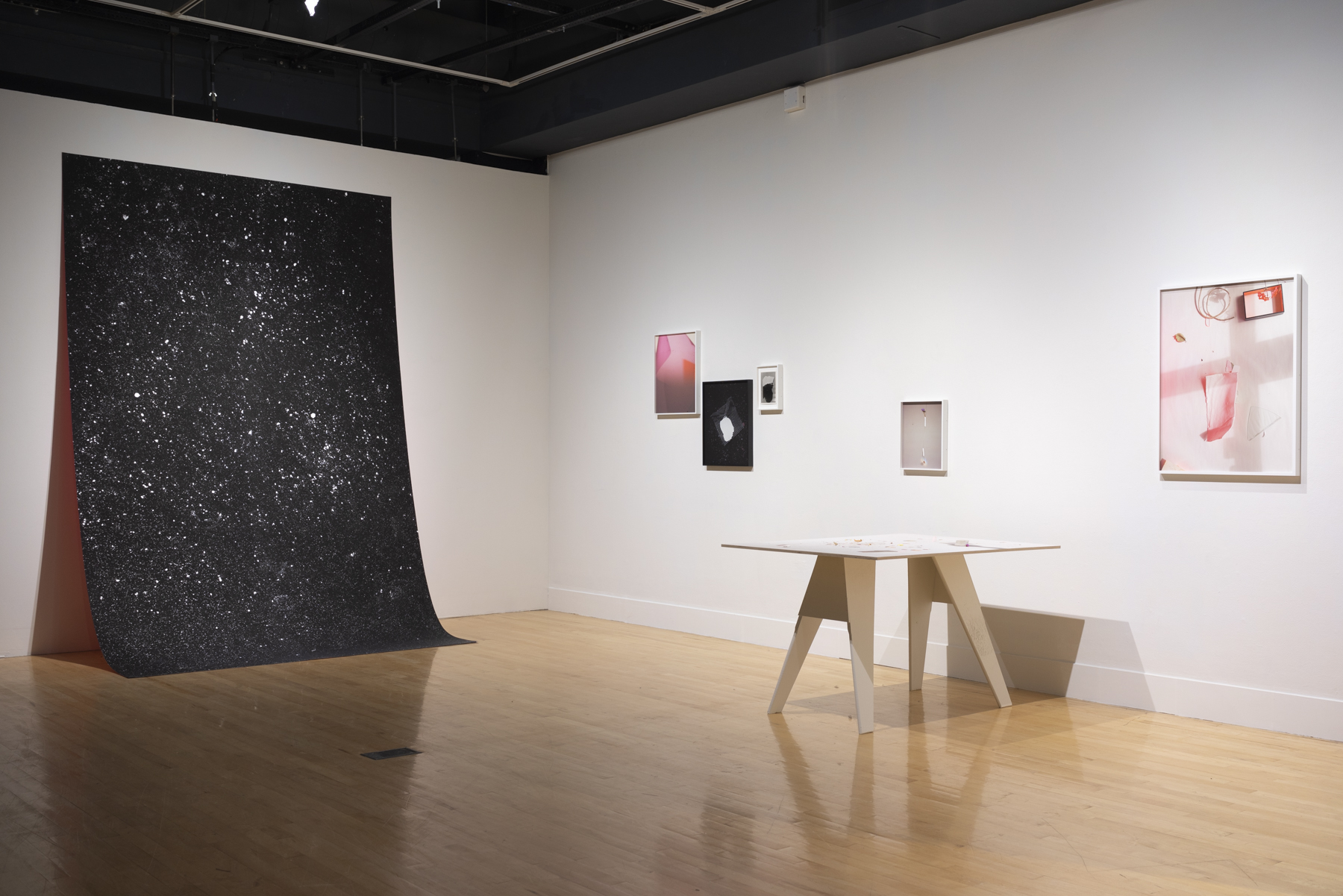
















Archival Inkjet Prints, Gelatin Silver Print, Table, Objects
I am interested in remnants and recurrence, the magical and the mundane, and our connection to space and time. In my studio or in the landscape, I create arrangements using common materials like paper, tape, plaster, and rocks. The resulting compositions are an interplay between objects, sunlight, color, and shadows, revealing something elemental and transitory about a time and a place.
Read Sofía Cordova’s essay from the SFSU 2024 MFA thesis catalog here.















From the ongoing series Every Once and Again, 2023-2024
Selected images from this series appear in my 2024 MFA thesis exhibition, So Far So Far, at San Francisco State University. See images from the installation here.




Think of Me as a Place, 2023
Archival pigment print mounted to birch panel, sawhorses, petals, twigs, crystallized calcium carbonate, redwood leaves, plaster casts, fossil, glass, plexiglass, gouache
36 x 48 x 29 inches
This work is a topography of the self: a collage of the found, broken, and made.
Natural and manmade objects rest on top of a photographic print. The photograph is of the same objects printed at a 1:1 scale, creating questions around what’s real and what’s photographic. Through this illusion, the notion of objective photographic truth becomes a site of play and inquiry.
Installation photos from the 2023 Murphy & Cadogan Award Exhibition

Solar-printed cyanotype photograms, 10 x 12.5 inches each, 2023

Solar-printed cyanotype photogram, single panel detail (4:30 pm)
This piece records of the sun’s changing angle over the course of a single day. Images shown in the installation are from approximately 11am, 12 pm, 2 pm, and 4:30pm. The parallelogram shape is formed as a result of the shadow of a rectangular object blocking the sun from reaching the light-sensitive paper.







That space, that garden is a group exhibition from lens-based artists Madeline Cass (NE), Meganelizabeth Diamond (CAN), Leah Koransky (CA), Emily Margarit Mason (NM) and Meg Roussos (WA) exploring the expansive possibilities that are given life when femme and queer perspectives engage with the genre of “landscape.” Though the legacy of this imagery is firmly stamped with terms like “modernism” and “straight photography,” this group of artists uses the tools of photographic history, from the earliest photographic methods to the most postmodern, to investigate the tactility and emotionality of a climate on the brink of catastrophe.
While distinctive in practice, the tools of these artists all overlap; their methodologies and processes are all oriented toward engaging with the land around them as an active co-conspirator. Through their images, these artists do not beg the viewer to “see like me” but rather invite the audience to “see for yourself” or, better yet, “touch for yourself.” —Delaney Hoffman
Press